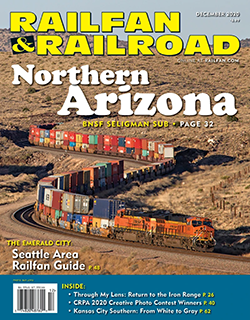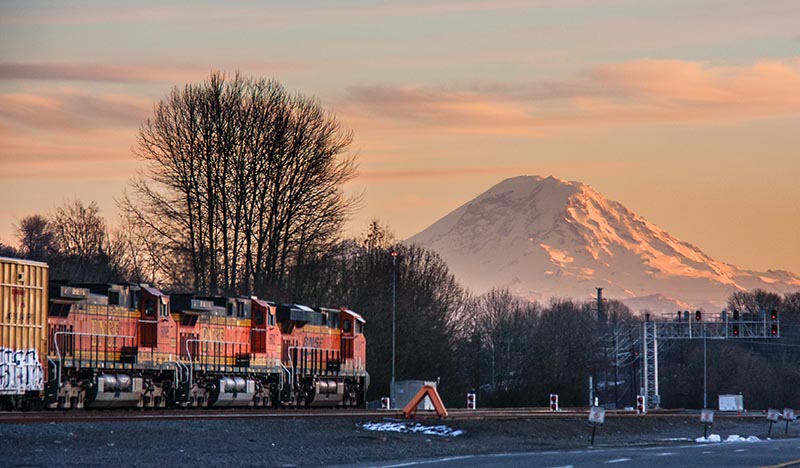 Seattle’s relationship with the railways has always been a complicated one. The Emerald City has been both spurned and loved by railroad builders. It has been a site of great hope, and also disappointment. Though rooted in the past, Seattle’s indelible attitude of innovation keeps it at the forefront of the economy and, in turn, the future of railway development.
Seattle’s relationship with the railways has always been a complicated one. The Emerald City has been both spurned and loved by railroad builders. It has been a site of great hope, and also disappointment. Though rooted in the past, Seattle’s indelible attitude of innovation keeps it at the forefront of the economy and, in turn, the future of railway development.
When Northern Pacific entered the northwest in the 1870s, its choice of terminus was Tacoma, 40 miles south. On paper it was logical, as Tacoma’s Commencement Bay was a natural deepwater port. Seattle, by contrast, was all ambition — but how could it not be? It was little more than some cabins in the mud. It had no natural deepwater, little flat land on which to expand, and no natural resources except imagination. It had nowhere to go but up. Seattleites quickly positioned their town as Tacoma’s rival, and, with NP service indifferent at best, they lobbied practically anyone else they could for a new railway.
In 1893, they succeeded, when James J. Hill’s Great Northern Railway reached the city and made it his western terminus. This was a momentous decade for the city; in addition to the arrival of GN, the Klondike Gold Rush kicked off in the far north, and Seattle became the primary American shipping point for miners. Shrewdly, Seattle realized that the real money was not in processing gold but in selling shovels; not in mines but in newly rich miners.
While Seattle got rich off the Klondike trade, the railways were interested in an emerging market across the Pacific — China and Japan. GN was emblematic — in 1905, Hill named his flagship train the Oriental Limited, and launched two ships, the S.S. Minnesota and the S.S. Dakota, putting them on a Seattle–Yokohama–Shanghai run. Unfortunately for Hill, there simply was not enough trade to support his transpacific route. The railway dream of capturing traffic from Asian markets never fully died, though, and it was enough to lure Union Pacific and Milwaukee Road into Seattle in 1909.
It was local industrial development, however, that made Seattle an industrial metropolis in its own right. The thick forests of Washington state supplied seemingly limitless timber, much of it milled or distributed through Seattle’s ports and rail yards. With ample waterfront, the city was home to shipbuilding yards during both world wars. Boeing, an early aviation innovator, quickly grew into a major corporation and, with the onset of World War II, became one of the largest manufacturing firms in the nation. Seattle businessmen have always been eager to invest in new ideas, and during the first half of the 20th century those ambitions paid off, rocketing Seattle into the largest and most important city in the Pacific Northwest.
Seattle remains a place of ambition, a place that anticipates the future and the new opportunities it may bring. Today, it is a major port — Hill’s dream of transpacific trade fully realized — and it is a hub of innovation in technology and transportation. From monorails to Spanish-built Talgo train sets to plans for a high-speed rail corridor to British Columbia and Oregon, Seattle looks forward more than any other city in its region.
Right now, coal traffic is declining, transpacific trade is in flux, and it’s unclear what the future holds for North American freight railways. Whatever comes next, though, you can rest assured that Seattle will be at its forefront, carving off its piece of the future.
—Consulting Editor ALEXANDER BENJAMIN CRAGHEAD is a transportation historian, photographer, artist, and author.



